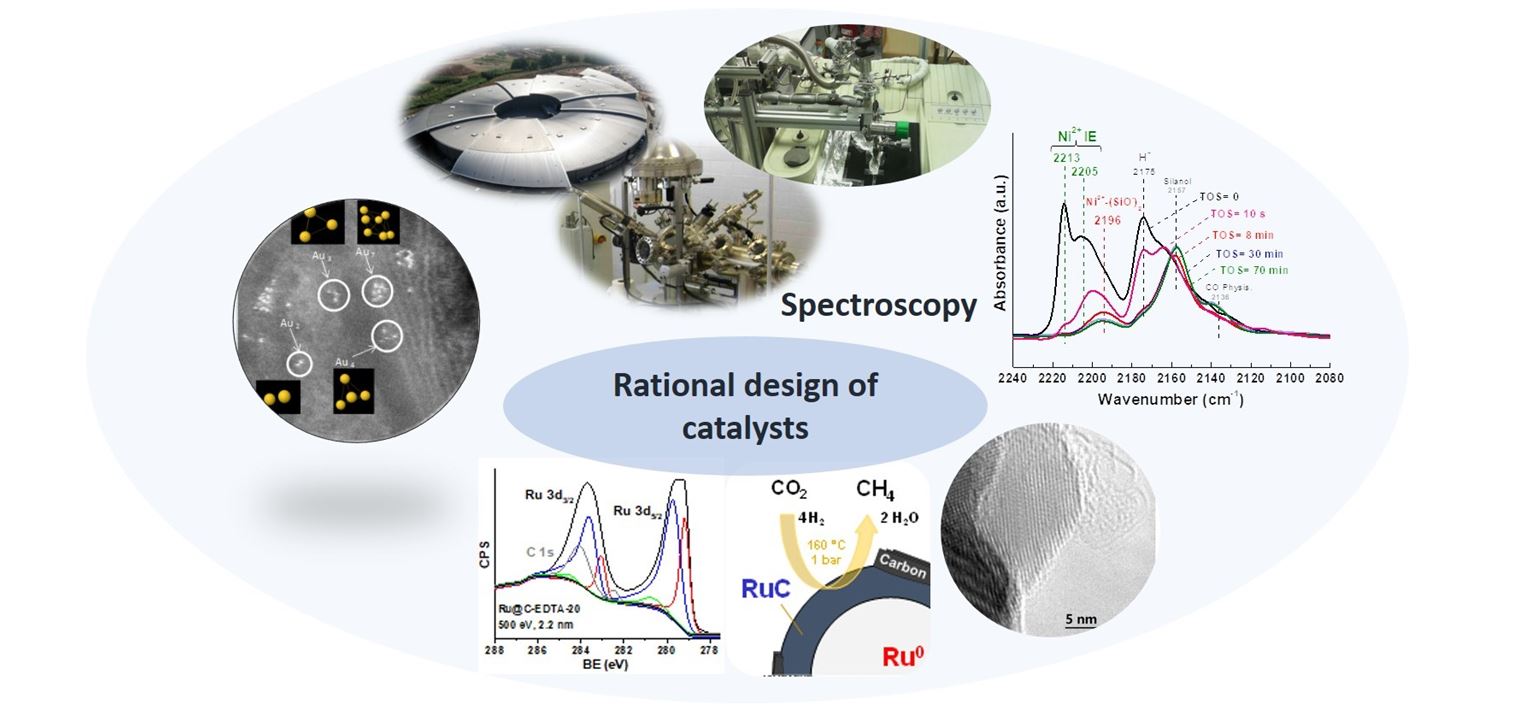Video Article Open Access
Catalysts for a Sustainable Chemistry: Rational Design
Patricia Concepción*, Agustín Martínez, Avelino Corma
Instituto de Tecnología Química, Universitat Politècnica de València-Consejo Superior de Investigaciones Científicas (UPV-CSIC), Avenida de los Naranjos s/n, 46022 Valencia, Spain
Vid. Proc. Adv. Mater., Volume 2, Article ID 2021-0189 (2021)
DOI: 10.5185/vpoam.2021.0189
Publication Date (Web): 13 Feb 2021
Copyright © IAAM
Graphical Abstract

Abstract
One the most important scientific challenges in our actual economy is a transition toward an eco-efficient economy, based on the use of renewable energy and new raw materials replacing fossil resources. In this scenario, the development of new catalyst is a key component. In the present talk, a rational design of active sites will be envisioned, presenting some important parameters for modulating catalytic activity, like particle size, electronic effects and synergetic effects between different active sites. Different examples of catalyst design and their relevance in industrial competitive processes will be highlighted, such as selective hydrogenation of αβ unsaturated aldehydes for fragrance manufacturing [1], water gas shift reaction for removing CO in effluent gas streams [2], Fisher Tropsch reaction for the production of liquid fuels from syngas [3], and CO2 methanation for energy storage [4]. In addition, the role of a multidisciplinary approach combining spectroscopy, theroretical calculation, chemical engineering and synthesis are highlighting, with special interest on the use of in situ spectroscopic tools5. In this direction, the role of spectroscopy in obtaining structure-activity correlations, and in defining the reaction mechanism allowing to direct the synthesis of new catalysts will be discussed. In summary, the aim of the talk is to present a global vision of catalyst design based on fundamental knowledge instead of the common used try and error methodology.
Keywords
Catalysis, spectroscopy, rational design, sustainability.
Acknowledgement
The research leading to these results has received funding from the Spanish Ministry of Science, Innovation and Universities through several programmes, specifically the “Severo Ochoa” Excellence Programme (SEV-2016-0683).
References
- P. Concepción, Y. Pérez, J.C. Hernández-Garrido, M. Fajardo, J.J. Calvino, A. Corma, Physical Chemistry Chemical Physics, 2013, 15 (29), 12048.
- N. Ogiwara, H. Kobayashi, P. Concepción, F. Rey, H. Kitagawa, Angewandte Chemie International Edition, 2019, 58 (34), 11731.
- F. Bertella, C.W. López, A.C. Foucher, G. Agostini, P. Concepción, E.A. Stach, A. Martínez, ACS Catalysis, 2020, 10 (11), 6042.
- J. Cored, A. García-Ortiz, S. Iborra, M.J. Climent, L.C. Liu, C.H. Chuang, T.S. Chan, C. Escudero, P. Concepción, A. Corma, Journal of the American Chemical Society, 2019, 141 (49), 19304.
- M. Boronat, P. Concepción, A. Corma, S. Gonzalez, F. Illas, P. Serna, Journal of the American Chemical Society, 2007, 129 (51), 16230.
Biography
Patricia Concepción belongs to the Higher Council for Scientific Research of Spain (CSIC) since 2002. Her actual research is in the field of heterogeneous catalysis, specifically directed to the synthesis, characterization and catalytic study of metal oxide, metal nanoparticles, clusters, and hybrid materials based on metal encapsulated in host materials like zeolites, metal organic framework and carbon matrix. The goal of her work is to determine structural- activity correlations of solid catalysts with applications in industrial relevant reactions, like selective hydrogenation and oxidation, C-C, C-N coupling, Fischer Tropsch, partial oxidation and ammoxidation of alkanes, methanol steam reforming and CO2 hydrogenation to fuels and chemicals. One important part of her research is focus on operando spectroscopic studies. She is author or co-author of a total of 179 publications published in high impact scientific journals and 5 patents. She has participated in several projects from the Spanish Ministry of Economy and Competitiveness, Government of the Generalitat Valenciana and the European Union (Horizon 2020) and participated in several contracts with the Industry (UBE, Repsol-YPF, HUTSMANN, CEPSA), and synchrotron projects (Bessy, SOLEIL, BNL, Argonne, ALBA, Diamond, ESRF). Since 2006 she is involved in a Master Course and other academic course, and in the management of technician work, master degrees, postdoctoral and predoctoral thesis.
Video Proceedings of Advanced Materials

Upcoming Congress



